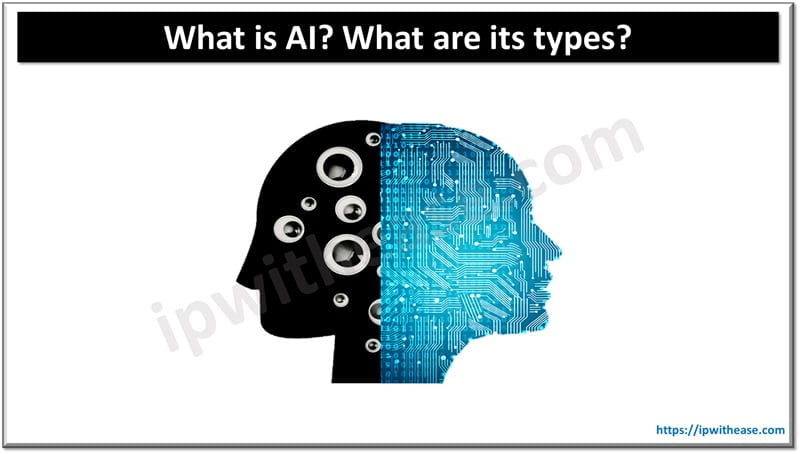Table of Contents
AI is one of the most disruptive technologies of our time, transforming the way humans interact with technology and vice versa. Simply explained, artificial intelligence (AI) is the development of computer systems capable of executing tasks associated with human intelligence. These are the approaches which include learning, reasoning and self-correction. It is used in a wide range of fields to perform tasks ranging from simple automation to problem solving, thus being a key element in the continuous evolution of technology.
To comprehend the subject of AI, it is crucial to know that there are different forms of AI, all with their specific functions. In this blog, we will focus on the definition of AI, the different categories of AI, and how they are transforming the world in different industries.

What is Artificial Intelligence?
Artificial intelligence (AI) is a subfield of computer science that focuses on developing intelligent computers capable of performing at the same level as humans. These tasks include obtaining knowledge, thinking, solving problems and exercises, perception and comprehending language. Artificial intelligence is an application of software and other computer systems designed to demonstrate human-like intelligence by solving problems, replicating human behavior and learning from past experiences.
Types of AI
Based on Capability
AI classification or levels of AI classify or categorize artificial intelligence based on the capability of a certain system. These are the following:
- The first one is Narrow AI, also known as Weak AI, which are applications that are designed for a particular specific niche like visual perception, translation, etc.
- The second one is general AI, which is AI with high functions, abilities, and logical capabilities, or what can be considered human-like AI.
- The third type is Superintelligent AI which has higher functions, abilities, and logical capabilities than the human brain. They are all distinct types of AI, each signifying a step forward in the technology in terms of closeness to the human brain and challenging tasks that they can efficiently complete.
Reactive Machines
Reactive machines are the least complex of all the proposed AI types and can only react to events without the ability to anticipate them. These ones are capable of producing outputs only when in contact with certain stimuli or inputs, unlike the type that can store information and use it in the future without relying on new information. Other models are only competent in the current environment and function in the present time, reacting to current data and inputs based on defined rules and computational algorithms.
Other great examples include IBM’s Deep Blue, it was a chess-playing computer which did not learn through games, unlike the present computer systems. The industry is currently at the second stage which is the development of Reactive machines that perform well in rigid scenarios but it has no ability to learn or adapt to the new context.
Limited Memory Machines
Reactive machines have already made improvements over the earlier forms of artificial intelligence known as ‘Turing Machines’ through the addition of limited memory to perform learning based on past data in order to make improved decisions. These AI systems can make use of their databases and previous experiences to determine how to further engage with the user or group.
They were used in the field of automated vehicles, where the system is constantly adapting to the observable environment, traffic, and past trials in order to improve the courses it is charting for the vehicle. This architecture is characterized by the use of machine learning techniques that allow for changing the model based on new incoming stimuli and incorporating its features, and thus constantly improving the AI performance.
Theory of Mind Machines
Theory of mind AI is a more sophisticated approach, which envisions the creation of AI systems with the capability of comprehending and/or modeling human sentiments, beliefs, purposes, and society. This type of AI looks forward to emulate the human mind to an extent of understanding other people’s feelings in order to improve mutual interactions.
Theory of mind machines would be extra capable in the aspect of handling and responding to human behavior therefore it’s suitable for use in social robotics, HCI and a personal assistant. At this level, although, it is still a concept that is still under research, it is a giant leap in the development of sophisticated machines that can perform social interactions as well as analyze motives for social interactions.
Self-Aware Machines
Organization of machines is deemed to be the top level of AI since such machines will be in a position to comprehend human’s feelings, societal relations, and even be alive. These machines would also possess what can best be described as engineering persons so that they can at least appreciate their own existences, states, and feelings. Super-intelligence can be considered as having a level of self-organization and self-control over itself and can be conscious and have subjective experiences.
This kind of AI is currently still very much in the realm of speculation and opens up numerous ethical and philosophical conundrums relating to the existence and place in the world of sentient beings. To get one step closer to real self-awareness in artificial intelligence, there are problems in neuroscience, cognitive science and artificial intelligence that need breakthroughs.
The advanced understanding of AI capabilities separated from computing with the presence of reactive machines, true artificial intelligence, and self-aware systems delivers the message of AI sophistication. Altogether, each type has the potential of bringing the development of Artificial Intelligence a step further, making it possible to design machines that can mimic human thinking and subsequently helping to extend the spectrum of opportunities within the field.
Conclusion
AI refers to a broad category of technologies with the ability to mimic human intelligence in the various classes of technology from the elementary or basic capabilities to the advanced capabilities of the autonomous self-aware machines. It is necessary to think with these sorts of insights to comprehend the scope of the prospects as well as the potential of AI.
It can increase your chances of success in the job market since AI and machine learning are promising fields with demand for competent professionals and prepare you for the ever-changing nature of AI. A well-designed AI and Machine Learning course provides career experience with algorithms, data analysis, and practice in other fields with the aim of developing positions in numerous sectors requiring AI talent, thus making you stand at the cutting edge in more ways than one.
ABOUT THE AUTHOR
IPwithease is aimed at sharing knowledge across varied domains like Network, Security, Virtualization, Software, Wireless, etc.



